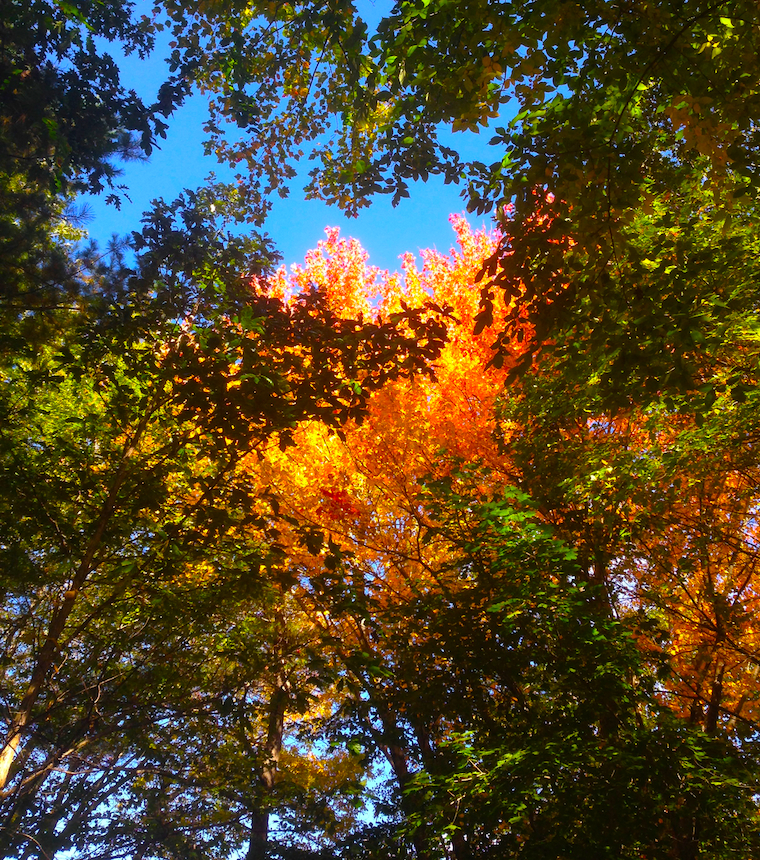The snow was not necessary to let us know that the turn into fall had been executed a while ago. It flickers and fades in the memory, receding further into the past. No longer is it possible to pretend that it hasn’t yet happened. There are a few more warm days to come, I hope, but the chill has set in, and the heat that the earth holds through early autumn has just about dissipated. Once it goes, it’s very difficult to get it back again, and we likely won’t have that all-enveloping warmth until next June. That feels like a long way off.
On Sunday, when the first few snowflakes fell, I’d made a tour of the yard. It had been a couple of weeks since I was last out. The fallen annuals and desiccated, brown ferns depressed me too much. In addition, I’d been sick, and traipsing around in the cooler weather did not seem like a good idea. Besides, I’d already seen the devastation that the arrival of fall inflicts on a garden. It starts with the ostrich ferns, particularly in such a dry hot summer. They were on their way out months ago. Now, they are long gone.
The leaves of the coral bark Japanese maple tree are just beginning to light up, and as soon as they turn yellow the brackets of their red bark will form a magnificent pairing. The traditional Japanese maples will burst into a brighter scarlet, and when they catch the dying sunlight they will burn like the most glorious fire.
The lady ferns have held on, and will slowly go a ghostly pale-cream shade, much like the lighter leaves of the Solomon’s seal have already done. This year the leaves of the hydrangeas have gone straight to burgundy, an interesting combination with their pink umbrels which continue the show. I cut them off and brought them inside before the hard frost.
Northern sea oats are in their seed-headed glory, nodding their dangling architecture in the slightest breeze, swaying and gently shimmering in whatever light the day affords. They’ve gone an earthy tan color, but even that will glow in afternoon sunlight. One of the best, and most surprising, color shifts occurs on the feathery leaves of the weeping larch. It looks so convincingly like an evergreen that the switch to a bright copper hue is startling, and always a shock. A beautiful, fiery, final clarion that will have to be enough to ignite the memory until its soft wintergreen starbursts signal the arrival of another spring.
The garden breathes slower now, preparing for its annual slumber. The days sigh, giving way to the nights. There will be other ways to find warmth now.
Back to Blog
